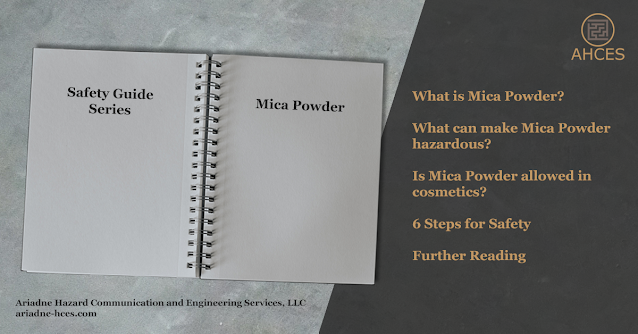Geraniol Safety Guide
What is Geraniol?
Geraniol, also known as geranyl alcohol, is a monoterpenoid alcohol. It is an organic compound found in many different essential oils, including rose oil, citronella oil, geranium oil, and lemon oil. Due to its pleasant rose like scent, it is commonly used in perfumes and other fragrances, as well as a flavoring agent in small quantities for candies, beverages, and other prepared food products.
Geraniol has the CAS Number 106-24-1.
Notable Properties of Geraniol
Pure geraniol is liquid at room temperature and is either colorless or a pale yellow in color. It has a distinctive sweet rose odor.
What Makes Geraniol Hazardous?
Geraniol is an irritant, causing skin and eye irritation on contact. Geraniol is also reported to be a skin sensitizer, with repeated exposure having the potential of causing contact dermatitis. Per the Hazardous Substances Data Bank, instances of contact dermatitis have been reported from bakery workers and bartenders regularly handling grated lemon peel and lemon oil, with geraniol determined to be the sensitizing agent.
Geraniol Frequently Asked Questions
Is geraniol toxic to humans?
Geraniol is not reported to be an oral toxin in humans by the Hazardous Substances Data Bank. The primary hazard of geraniol is skin irritation and contact dermatitis.
Is geraniol an essential oil?
Geraniol is a major component of many essential oils but is not an essential oil on its own.
6 Steps for Safety
Step 1: Read the Warnings
When working with a product for the first time, always read all the safety documents first. This includes safety data sheets, which should be provided by the manufacturer or importer of the geraniol product. There may also be an OSHA chemical label or a Consumer Protection label on the packaging of the geraniol product. These documents all contain important information on the hazards of the product and instructions on how to mitigate those hazards.
Note that different geraniol products can have different safety considerations depending on the other ingredients. For example, the d-limonene component of orange oil is a known toxin in cats, which will require different safety and workplace preparations compared to pure geraniol.
Step 2: Prepare Your Workspace
Creating a safe workspace, sometimes referred to as engineering control, is a key component of working safely with any potentially hazardous substance.
Geraniol is a liquid in its pure form, which means it can easily flow when spilled, as well as seep into surfaces. Therefore, it is important to have a spill kit available with absorbent material to soak up and capture any spilled geraniol.
Step 3: Gather Your PPE
For handling concentrated geraniol, the following PPE is recommended depending on the quantity being used and engineering controls in place.
- Gloves
- Basic disposable gloves, or other rubberized gloves, will prevent geraniol from touching the skin on the hands and causing irritation.
- Rubberized Apron
- A rubberized apron, or another body covering that prevents geraniol from soaking into clothing, is best to prevent skin exposure.
- Respiratory Protection
- A mask meant for organic vapors will protect the respiratory system from irritation.
- Eye Protection
- Safety goggles which form a protective seal around the eyes can be used to prevent geraniol splash from reaching the eyes.
Step 4: Clear Your Workspace
Having a clear workspace is important for safety as it can prevent accidents caused by tripping, as well as allowing you to easily spot any spills.
This is also a good time to ensure all engineering controls are functional. When working with large quantities of geraniol, it is good to have a spill kit on hand to contain liquid spills. Having materials such as activated carbon on hand can also be useful in the event of a large spill to help neutralize odors.
Step 5: Do The Work
If engineering controls and PPE are used properly, working with geraniol can be done safely.
If work cannot be completed in one sitting, be sure to properly seal any geraniol containers to prevent spills or accidental release when not in use.
Step 6: Clean Up
Geraniol may leave residue from any drips or small spills. Clean up geraniol with an absorbent material, such as paper towels, or a granular absorbent such as sawdust.
Be sure to dispose of any waste in accordance with local regulations.
Further Reading
The National Library of Medicine has a PubChem article on Geraniol
Check out the Safety Guide Series Hub for more safety guides.
Sources Cited
National Center for Biotechnology Information (2024). PubChem Annotation Record for , GERANIOL, Source: Hazardous Substances Data Bank (HSDB). Retrieved August 13, 2024 from https://pubchem.ncbi.nlm.nih.gov.
National Center for Biotechnology Information (2024). PubChem Compound Summary for CID 637566, Geraniol. Retrieved August 13, 2024 from https://pubchem.ncbi.nlm.nih.gov/compound/Geraniol.
National Oceanic and Atmospheric Administration (n.d.). Geraniol. CAMEO Chemicals. Retrieved August 13, 2024, from https://cameochemicals.noaa.gov/chemical/20432





Comments
Post a Comment